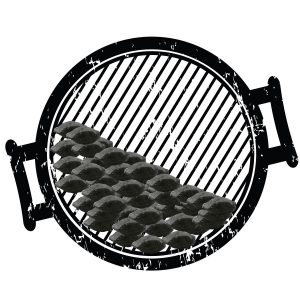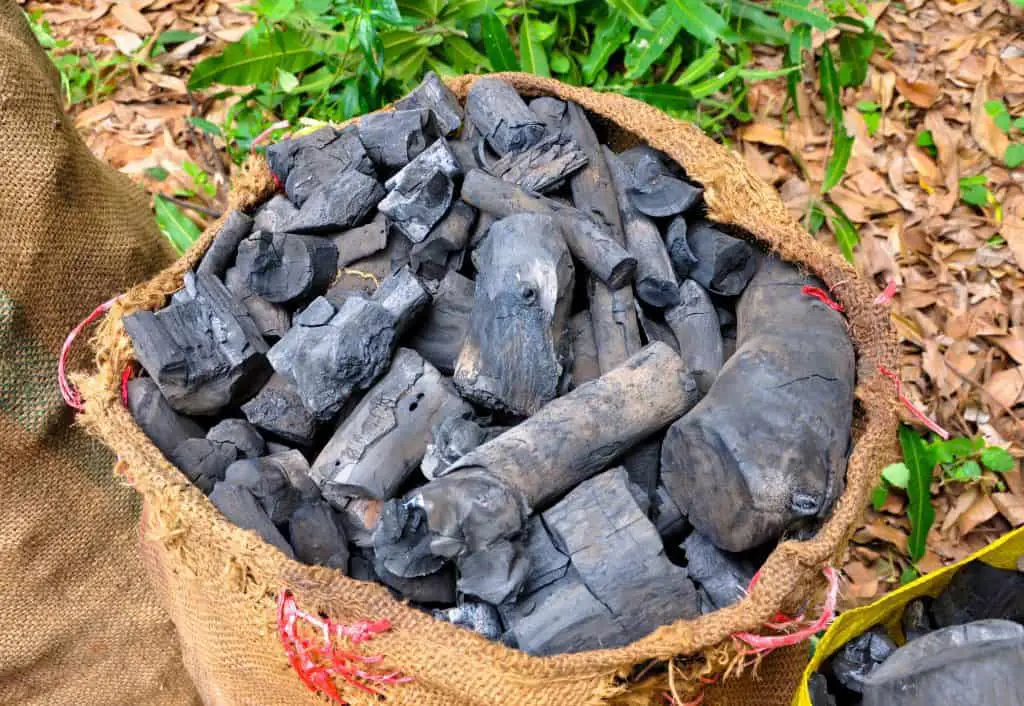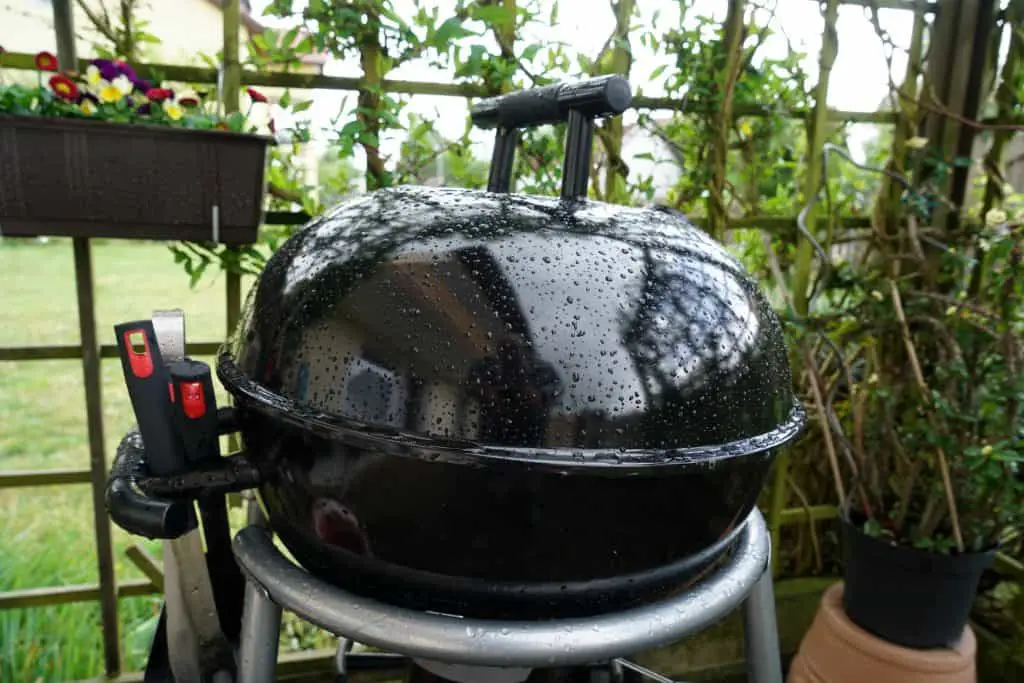Cooking over charcoal gives your meat a delicious savoury flavor, provided it gets hot enough and burns consistently. The key to getting your charcoal roaring and ready for cooking, is in the lighting process.
We’re all allowed to struggle with lighting charcoal sometimes, and over time you’ll quickly find what works best for you. But, if your charcoal won’t light, that doesn’t necessarily mean that it’s unusable–you just might need to make a few adjustments.
Here are the most common reasons why your charcoal won’t light and the flame keeps dying out.
8 Reasons Your Charcoal Won’t Light
The Charcoal Is Too Damp
You can’t grill with damp charcoal any more than you can with damp wood. Charcoal absorbs water and moisture, making it near impossible to light a flame. This obviously applies to rain and standing water, but your charcoal might be damp even if it looks dry on the outside.
Charcoal absorbs water vapor in the air through its pores, which means even if it’s been stored in wet, humid conditions, it’s likely to have become damp. To keep your charcoal from absorbing moisture, keep it in a well-sealed container and store it in a cool, dry place.
If it’s only slightly damp then it’s still salvageable. You’ll just have to wait for a dry sunny day. Lay out your lump charcoal or charcoal briquettes on a towel in the light, but not the direct sunlight. After 2-8 hours your charcoal will have dehydrated and you can try use it for the next cook.
The Charcoal Isn’t Stacked Properly
When grilling or smoking, the way you arrange the charcoal will directly influence the temperature and how long the charcoal will burn. Your charcoal might not even light if it’s simply spread evenly on the bottom of your grill or smoker.
Heat doesn’t distribute itself evenly throughout the grill–instead, it rises toward the top. You might need to re-stack your charcoal so the heat rises upward. If you pile kindling and newspaper under the charcoal to get it going you might find the charcoal collapses into a single layer afterward, which can cause the charcoal to die out.
Instead, always construct your charcoal in a pyramid structure, whether you’re doing the snake method or setting up the two zone heat method.
The Snake Method

Two Zone Method

To make it 10x easier, you could utilize a high quality charcoal chimney starter for your grill. A chimney starter is a cylindrical piece of metal that you can pile your charcoal inside. Light the bottom of the charcoal starter, wait for your charcoal to light effectively, then dump it out inside your grill and start cooking. Unlike makeshift starters like newspapers, you can reuse a chimney starter as many times as you want and it removes any guesswork.
If you don’t have a charcoal chimney, check this guide on the best ways to light a charcoal grill.
The Vents Are Closed
If you’ve done everything right and your charcoal still won’t light, you might have accidentally left the vents closed. The vents allow air to flow through your grill and maintain a steady temperature throughout the cooking process. Your fire needs oxygen to start, so if you’ve closed the air vents, your charcoal might not get the airflow that it needs.
Fortunately, all you have to do is open the vents. Once the charcoal has caught fire and burned consistently for a while, you can adjust the vents or close them altogether depending on what temperature you want to harness.
I always recommend not shutting the vents until the charcoal has developed an ashy white coating indicating it’s ready for use.
The Charcoal Is Smothered
Another quick and easy adjustment you can make if your charcoal won’t light is to ensure the charcoal has plenty of breathing room. If you add too many wood chips or wood chunks, or add them before the charcoal is fully combusting, then you will be limiting the airflow to the charcoal.
To avoid smothering your charcoal, wait until the charcoal has burned for at least 15 minutes and has developed the ashy white coating before you add anything else, including the meat to your grill! Keep in mind that your wood has to be just as dry as the charcoal. If your wood is damp your charcoal will likely go out!
Do not attempt to pour lighter fluid on lit charcoal!
You’re Using Unevenly Sized Charcoal


If you’ve been around the block you will have heard or been part of the debate: lump charcoal vs. charcoal briquettes (and even charcoal logs).
True, there are many similarities between them, but there are equally as many differences. Charcoal briquettes are designed to light more quickly, and stay lit. They are all of equal sizes which helps for consistency.
When it comes to lump charcoal, which tends to be the more natural option, the lighting process can be slightly more difficult. Lump charcoal does tend to burn out a little quicker, but will produce very little ash and a nice hot and constant heat throughout the whole cook.
Each can be used to it’s advantages. However, you can’t very easily use them both at once. If you’re struggling to light your charcoal and are using different charcoal types or brands you may need to reconsider.
If you want to cook with the highest quality, check out our buyer’s guide to the best charcoal briquettes, and the best lump charcoal for smoking.
Your Grill Or Smoker Isn’t Clean/Clear Of Ash
Keeping your grill clean is the key to starting a fire. If you don’t clean the ash out after you put out your charcoal grill, the ash accumulates at the bottom of your grill and often forms a paste if it captures too much moisture. When you add your charcoal it absorbs the moisture in the paste, making it severely annoying to light a fire.
Clean the ash out of your grill every time you barbecue even if you don’t think it’s necessary–if you don’t, your next cookout might be a failure. You might even find an unpleasant taste on your meat at the end of it!
Similarly, your charcoal won’t light if you let grease accumulate on the grates. As the charcoal heats the grease, it melts and drips, dampening the charcoal and ruining your cookout. The grease might also clog the vents and obstruct the airflow inside your grill or smoker.
Plus, an accumulation of grease can affect the taste of your meat and cause other issues. Always clean the dried grease and ash off the grill every time you barbecue.
The Weather Conditions Are Too Harsh

There is no doubt you’re going to have a battle if you’re trying to smoke meat in the rain, wind, or cold.
When the wind goes through the vents it will undesirably stoke the flames, or even blow it out if you’re trying to light it. Similarly, if the rain hits your grill directly it’s going to get inside and cause you a headache trying to light the charcoal.
If the weather conditions are harsh but you don’t want to let that stop you grilling or smoking your favourite meats then there are a few things you can do to help your charcoal stay lit.
Always smoke under cover and ideally tucked somewhere out of the flow of the wind. If it really is too much you might need to fire up the reliable indoor smoker instead and take a loss on this one.
It’s Too Humid
Depending on your climate you may need to take extra care when storing you charcoal. That’s right, if you leave your charcoal out in humid weather it’s bound to absorb some of the excess water moisture from the air. If too much of this is absorbed, such as when your charcoal isn’t kept in an airtight container in a cool, dry place, then it will become much more difficult to light.
However, unless it’s absorbed a tonne of moisture from the air then your charcoal might still ignite if you do everything else right, but it’s important to note that the humidity can affect smoking meat.
What To Do When Your Charcoal Won’t Light
If you’ve ruled out all the possible causes as to why your charcoal won’t light, and you’re really getting frustrated, then there a few other things you can do to make the process a breeze.
Use A Charcoal Chimney
Honestly, once you get a hold of a charcoal chimney the whole lighting process of charcoal becomes so easy.
A charcoal chimney perfectly stacks your charcoal vertically with adequate ventilation. By lighting a small amount of newspaper at the bottom of the chimney, or by using a fire stoker you can easily get any amount of charcoal going.
Charcoal chimneys are more reliable, cleaner and environmentally friendly, much safer, and long lasting.
If you want reliable results, check out our guide to the best charcoal chimneys to light charcoal easily.
Should You Use Quick Light Charcoal As An Option?
The main benefit of quick light charcoal, such as Kingsford match light charcoal, is that it does just that: lights quickly. Most quick light charcoal brands boast a 10 minute light time until it’s ready to use. Although I would always wait to see if the charcoal has a thin layer of white ash over it, indicating the any or most of the chemicals will be burnt off.
Although it’s fail proof, it’s definitely not the most all-natural option, and unfortunately you’re limited to how much charcoal is in the bag, rather than being able to choose your desired amount or and add more charcoal during the cook.

